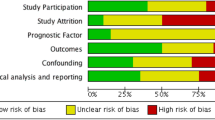Abstract
A new medical device has been designed for inducing hypothermia in kidneys, via laparoscopic deployment, without leaving residual fluid in the abdomen. It was tested in laboratory and animal trials to ascertain its suitability for achieving a target renal temperature of 15°C for tissue preservation within a 30-min period. A simple theoretical model was developed to calculate cooling rates under ideal circumstances. In the laboratory, a potato was used as the model for the kidney and an average minimum temperature of 15.8°C was reached in 30 min. The theoretical model calculated this as 9.9°C. In the animal trials, an average minimum temperature of 11.4°C was reached in 30 min, compared to the calculated temperature of 9.8°C from the theoretical model. In conclusion, the new device can cool as affectively as other techniques trialled, with the added advantage that it does not release cold fluid or ice into the abdomen.






Similar content being viewed by others
References
Adkins KL, Chang SS, Cookson MS, Smith JA (2003) Partial nephrectomy safely preserves renal function in patients with a solitary kidney. J Urol 169(1):79–81
Ames CD, Venkatesh R, Weld KJ, Morrissey K, Foyil KV, Shen T, Dryer S, Hruby G, Sutera SP, Landman J (2005) Laparoscopic renal parenchymal hypothermia with novel ice-slush deployment mechanism. Urology 66:33–37
Brenner BM (ed) (1996) The kidney, vol 1, 5th edn. W B Saunders, USA
Buhri AB, Singh RP (1993) Measurement of thermal conductivity using differential scanning calorimetry. J Food Sci 58(5):1145–1147
Cengel YA, Boles MA (1998) Thermodynamics: an engineering approach, 3rd edn. WCB McGraw-Hill, USA
Cooper TE, Trezek GJ (1971) Correlation of thermal properties of some human tissue with water content. Aerosp Med 42(1):24–27
Duck FA (1990) Physical properties of tissue: a comprehensive reference book. Academic Press, Great Britain
Ghavamian R, Cheville JC, Lohse CM, Waever AL, Zinke H, Blute ML (2002) Renal cell carcinoma in the solitary kidney: an analysis of complications and outcome after nephron sparing surgery. J Urol 168(2):456–459
Gill IS, Abreu SC, Desai MM, Steinberg AP, Ramani AP, Ng C, Banks K, Novick AC, Kaouk JH (2003) Laparoscopiuc ice slush renal hypothermia for partial nephrectomy: the initial experience. J Urol 170:52–56
Herrell SD, Jahoda AE, Husain AN, Albala DM (1998) The laparoscopic cooling sheath: novel device for hypothermic preservation of kidney during temporary renal artery occlusion. J Endourol 12(2):155–161
Janetschek G, Abdelmaksoud A, Bagheri F, Al-Zahrani K, nad Leeb H, Gschwedtner M (2004) Laparoscopic partial nephrectomy in cold ischemia: renal artery perfusion. J Urol 171:68–71
Landman J, Venkatesh R, Lee D, Vanlangendonck R, Morrissey K, Andriole GL, Clayman RV, Sundaram CP (2003) Renal hypothermia achieved by retrograde endoscopic cold saline perfusion: technique and initial clinical application. Urol 61:1023–1025
Laven BA, Kasza KE, Rapp DE, Orvieto MA, Lyon MB, Oras JJ, Bieser DG, Vanden Hoek TL, Som H, Shalhav AL (2006) A pilot study of ice-slurry application for inducing laparoscopic renal hypothermia. BJU Int 66:166–170
Navarro AP, Sohrabi S, Colechin E, Griffiths C, Talbot D, Soomro NA (2008) Evaluation of the ischemic protection efficacy of a laparoscopic renal cooling device using renal transplantation viability assessment criteria in a porcine model. J Urol 179:1184–1189
Pandit RB, Prasad S (2003) Finite element analysis of micorwave heating of potato-transient temperature profiles. J Food Eng 60:193–202
Ramani AP, Ryndin I, Lynch AC, Veetil RTP (2006) Current concepts in achieving hypothermia during laparoscopic partial nephrectomy. BJU Int 97:342–344
Totora GJ, Grabowski SR (2000) Principles of anatomy and physiology, 9th edn. Wiley, USA
Wakabayashi Y, Narita M, Kin CJ, Kawakami T, Yoshiki T, Okada Y (2004) Renal hypothermia using ice slush for retroperitoneal laparoscopic partial nephrectomy. Urology 63:773–775
Ward JP (1975) Determination of the optimum temperature for regional renal hypothermia during temporary renal ischemia. Br J Urol 47:17–24
Webster TM, Moeckel GW, Herrell SD (2005) Simple method for achieving renal parenchymal hypothermia for pure laparoscopic partial nephrectomy. J Endourol 19(9):1075–1081
Wickham JE (1967) Regional renal hypothermia. Br J Urol 39(6):727–743
Author information
Authors and Affiliations
Corresponding author
Rights and permissions
About this article
Cite this article
Colechin, E.S., Riddle, J., Navarro, A.P. et al. Laparoscopic renal cooling device. Med Biol Eng Comput 46, 1219–1225 (2008). https://doi.org/10.1007/s11517-008-0378-z
Received:
Accepted:
Published:
Issue Date:
DOI: https://doi.org/10.1007/s11517-008-0378-z




